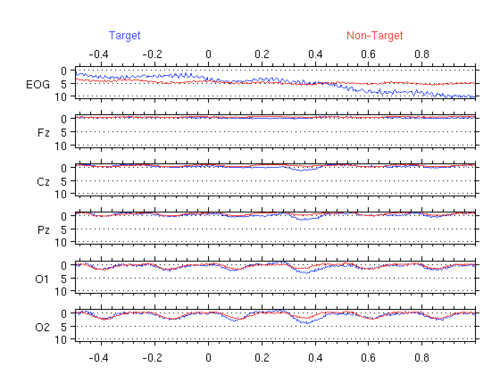Online automatic tuning of the number of repetitions in a P300-based BCI
Contents
Part 1: project profile
Project name
Online automatic tuning of the number of repetitions in a P300-based BCI
Project short description
In a P300-based BCI, (visual) stimuli are presented to the user, and the intention of the user is recognized when a P300 potential is recognized in response of the desired stimulus. In order to improve accuracy, many stimulation rounds are usually performed before making a decision. The exact number of repetitions depends on the user and the goodness of the classifier, but it is usually fixed a-priori. The aim of this project is to adapt the number of repetitions to changing conditions, so as to achieve the maximum accuracy with the minimum time.
Dates
Start date: 18/06/09
First talk: 01/07/09
Startof laboratory work: 27/07/09
End date:
People involved
Project head(s)
Matteo Matteucci [1]
Other Politecnico di Milano people
Bernardo Dal Seno [2]
Students currently working on the project
Siegfried Cattaneo [3]
Laboratory work and risk analysis
To acquire the data needed for the thesis 2 to 3 different subjects perform 2 to 3 sessions each. Each session consists of a number of 15 to 20 stimulation rounds for each character. Since each stimulation takes 125ms and we have to record data related to 10 word of 10 character each, each session takes approximately 2 hours. For each subject, the first session is offline, which means that the classifier is not running and we just record the data from the BCI. During this phase the letters that the subject "watches" are pre-assigned. The other sessions, instead, are online and the classifier tries to detect wich character is being thought by the user.
Even if no accident has been reported in politecnico while using an EEG, connecting a human head to an electrical device via electrodes could potentially lead to electrical shock. More information about the risk of the EEG could be find here, (note that it is not the same device that we use for these experiments). Also everyone on the airlab must follow the airlab's saftey norms (in this case especially the one related to the use of electrical equipment [4])
A little bit of sleepiness, after having watched for 2 hours blinking letters on a monitor can be expected =)
